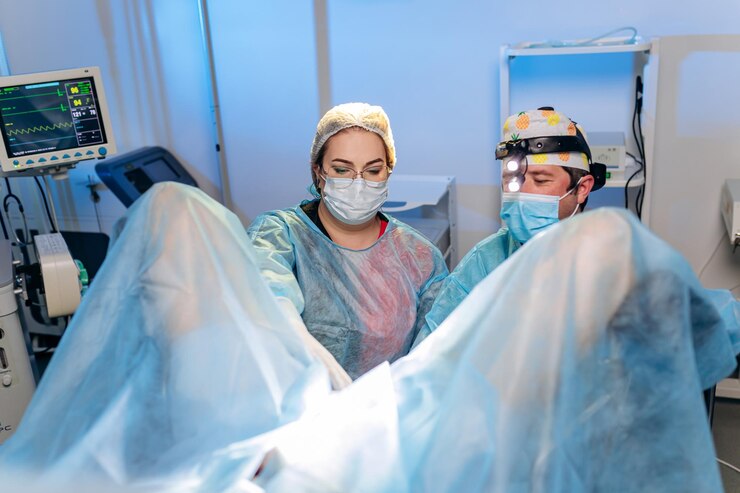Anus is the muscular opening that is positioned at the end of the digestive tract providing a way for defecation. Numerous amounts of anal glands which secrete mucous are situated inside the anus.
So these glands have a high possibility to get infected after getting clogged. Infected glands can cause abscesses or a collection of pus. This pus has to be drained naturally or surgically through the skin next to the anus. When this drainage tunnel remains open connecting the infected gland, abscess, or anal canal to an opening outside the skin around the anus it is called an anal fistula. This anal fistula usually becomes very troublesome and will not get better on its own. Normally it requires surgical removal.
Causes for Anal Fistula
- Anal abscesses which don’t heal properly heal even after pus had been drained away.
- Crohn’s disease causes ulcers and inflammation in the anal canal.
- Diverticulitis creates small infected pouches in the large colon.
- Tuberculosis
- Trauma to the anal area can be due to anal intercourse
- Infections of the anal canal
- Sexually transmitted diseases such as HIV
- Radiation therapy
- Due to previous surgical interventions near the anus
- Anal carcinoma
Risk Factors
- Diabetes mellitus
- Sedentary lifestyle
- Excessive intake of oily, salty, and spicy food
- Smoking
- Dyslipidemia
- Excessive alcohol consumption
- Drinking caffeinated beverages and eating a lot of bakery items
- Use of unhealthy soap for washing after defecation which can irritate the area around the anus
Clinical Features of Anal Fistula
- Formation of anal abscess often
- Irritation of skin around the anus
- A constant pain in the area around the anus which can be exacerbated when you are in a sitting position, moving around, coughing, or defecating.
- Continuous scanty smelly discharge near your anus
- Fever, chills, and generalized tiredness
- Discharge of pus or blood during defecation
- Bowel incontinence
- Swelling, redness, and high temperature due to inflammation around the anus
Complications of Anal Fistula
- An anal fistula can reappear even after medical and surgical management.
- Fecal incontinence is being unable to hold stools and needing to defecate as soon as you get the urge to defecate after the surgical interventions to remove the fistula.
Diagnosis of Anal Fistula
Initially, the medical officer will assess you through history and examination of the area around the anus. If they find out an opening in the skin, they will examine the length and direction of the fistula. Per rectal examination can’t be done without analgesics in these patients due to severe pain. Hence it is normally done in the operating room under anesthesia.
At times when the patient is experiencing clinical features of an anal fistula while it is not visible during the examination, special investigations will have to be used to confirm the diagnosis. Moreover these investigations include anoscopy, ultrasound scan, or MRI.
After the diagnosis of the fistula, your medical officer will recommend you few other blood investigations, imaging studies, and even a colonoscopy. Then It will help to exclude possible another disease Crohn’s disease which can be the underlying cause for the development of fistula.

Management of Anal Fistula
Surgical Management
- Usually, all anal fistulas are managed surgically. In further there are a few types of surgical interventions and which type you will have to undergo will be decided by your doctor according to the size and site of the fistula you are having.
- A fistulotomy is usually done for the fistulas which are situated away from the sphincter muscle and have no or little involvement of sphincter muscles. The skin and muscle overlying the fistula are removed while forming an open groove out of the fistula.
- The Seton procedure is done for more complex fistulas in which a piece of surgical thread called a seton is placed in the fistula and left for approximately a duration of six weeks. Later a surgical intervention such as fistulotomy, flap repair, or a lift procedure is done.
- Sometimes these fistulas can recur even after surgery and these patients will require many surgical interventions to reach a complete cure.
Medical Management
- Painkillers or injections of lidocaine which creates anesthesia around the anus will be prescribed to manage pain and discomfort around the anus.
- Laxatives and fecal softeners are also prescribed sometimes to ease your defecation.
Lifestyle Management
- Engaging in sitz baths which involve soaking your affected area in a warm bath can bring you instant symptom relief.
- Include a high amount of fiber in your diet which will soften your stools. Oats, whole grains, leafy. vegetables, and some fruits such as bananas consist of high fiber amounts of fiber.
- Drink a sufficient amount of water.
- Engage in regular exercise.
- Maintain cleanliness and dryness in the area around the anus.
- Avoid straining while passing stools and maintain healthy bowel habits.
References

- Bailey and Love’s Short Practice of Surgery- 27th Edition
- Kumar and Clerk’s Clinical Medicine -8th Edition- Parveen Kumar, Michael Clark
- Oxford Handbook of Clinical Medicine – 10th Edition
- Browse’s Introduction to the Symptoms and Signs of Surgical Disease – 4th Edition – Norman L. Browse, John Black, Kevin G. Burnand and William E.G. Thomas
- Image by jcomp on Freepik

